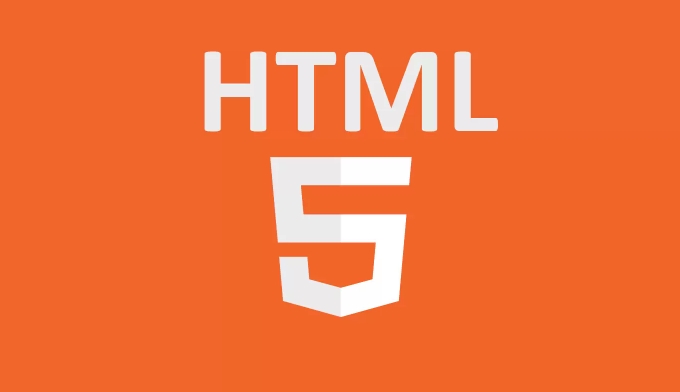Integrating CSS and JavaScript effectively with HTML5 structure.
Jul 12, 2025 am 03:01 AMHTML5, CSS and JavaScript should be efficiently combined with semantic tags, reasonable loading order and decoupling design. 1. Use HTML5 semantic tags such as

In web development, HTML5 provides a structural foundation, while CSS and JavaScript are responsible for styles and interactions, respectively. How to efficiently combine the three directly affects the performance and user experience of the page. The key is clear structure, reasonable loading, and decoupling of code.

Improve maintainability with semantic tags
HTML5 introduces <header></header> , <nav></nav> ,
- A clearer structure means easier to understand and maintain
- Promote SEO and barrier-free access
- Reduces meaningless div nesting and improves code simplicity
For example:

<header class="site-header">
<h1>My website</h1>
<nav>
<ul>
<li><a href="http://ipnx.cn/link/6fbb2c2ee065c77a193d0057aab8fa11">Home</a></li>
<li><a href="#about">About</a></li>
</ul>
</nav>
</header>In CSS, you can write styles directly for these tags, such as:
.site-header {
background-color: #f8f8f8;
}JavaScript can also use these tags for logical operations, such as clicking on navigation to highlight the current item.

CSS loading location and organization method
CSS should be introduced in <head> as much as possible to avoid "Flashing of Unstyled Content (FOUC)" on the page.
- It is recommended to use
<link rel="stylesheet" href="styles.css">to introduce external files - Avoid excessive use of
<style>tag inline styles unless it is a dynamically generated style - You can split CSS files according to modules, and finally merge and compress them to be online
For example:
<head> <meta charset="UTF-8"> <title>My Page</title> <link rel="stylesheet" href="reset.css"> <link rel="stylesheet" href="layout.css"> <link rel="stylesheet" href="theme.css"> </head>
Notice:
- Try not to put CSS at the end of the body, otherwise it may cause style delays to apply.
- If there is a non-critical CSS (such as print styles) that requires asynchronous loading, dynamic loading can be done by media queries or JS
The timing and execution control of JavaScript
JS is usually recommended to put it before the <body> end tag, so that the browser can load and execute the script after parsing the HTML content to avoid blocking rendering.
- Use
deferorasyncattributes to make scripts load asynchronously - Avoid writing a large amount of JS in HTML pages, recommending external links to be introduced
- Pay attention to the dependency order between scripts, especially library files (such as jQuery) should be loaded before the plugin
Example:
<body>
<main>
<!-- Page content-->
</main>
<script src="vendor/jquery.js"></script>
<script src="app.js" defer></script>
</body>illustrate:
-
defermeans that the script will wait until the HTML parsing is completed before execution, and maintain the loading order -
asyncmeans that the script is loaded asynchronously, and does not block HTML parsing when downloading, and executes immediately after downloading, and does not guarantee the execution order.
If you are not sure about the dependency, use defer first.
Reduce coupling and improve collaboration efficiency
The separation of the three front-end blocks does not mean completely independent. For long-term project maintenance considerations, strong mutual dependence should be minimized.
- Do not modify class names frequently in JS. Behavior should be driven by data attributes (data-*).
- Avoid using display:none to control state in CSS, classes should be added/removed by JS
- Unified naming specifications to facilitate multi-person collaboration and problem finding
For example:
<button data-action="toggle-menu">Menu</button>
Listen to data properties in JS:
document.querySelector('[data-action="toggle-menu"]').addEventListener('click', function () {
document.querySelector('.menu').classList.toggle('active');
});CSS controls active status:
.menu {
display: none;
}
.menu.active {
display: block;
}This method allows HTML, CSS, and JS to perform their duties and make modifications more organized.
Basically that's it. Implementing these points into daily development can effectively improve the structural clarity and operation efficiency of the project, and also make team collaboration smoother.
The above is the detailed content of Integrating CSS and JavaScript effectively with HTML5 structure.. For more information, please follow other related articles on the PHP Chinese website!

Hot AI Tools

Undress AI Tool
Undress images for free

Undresser.AI Undress
AI-powered app for creating realistic nude photos

AI Clothes Remover
Online AI tool for removing clothes from photos.

Clothoff.io
AI clothes remover

Video Face Swap
Swap faces in any video effortlessly with our completely free AI face swap tool!

Hot Article

Hot Tools

Notepad++7.3.1
Easy-to-use and free code editor

SublimeText3 Chinese version
Chinese version, very easy to use

Zend Studio 13.0.1
Powerful PHP integrated development environment

Dreamweaver CS6
Visual web development tools

SublimeText3 Mac version
God-level code editing software (SublimeText3)

Hot Topics
 How to use PHP to build social sharing functions PHP sharing interface integration practice
Jul 25, 2025 pm 08:51 PM
How to use PHP to build social sharing functions PHP sharing interface integration practice
Jul 25, 2025 pm 08:51 PM
The core method of building social sharing functions in PHP is to dynamically generate sharing links that meet the requirements of each platform. 1. First get the current page or specified URL and article information; 2. Use urlencode to encode the parameters; 3. Splice and generate sharing links according to the protocols of each platform; 4. Display links on the front end for users to click and share; 5. Dynamically generate OG tags on the page to optimize sharing content display; 6. Be sure to escape user input to prevent XSS attacks. This method does not require complex authentication, has low maintenance costs, and is suitable for most content sharing needs.
 PHP creates a blog comment system to monetize PHP comment review and anti-brush strategy
Jul 25, 2025 pm 08:27 PM
PHP creates a blog comment system to monetize PHP comment review and anti-brush strategy
Jul 25, 2025 pm 08:27 PM
1. Maximizing the commercial value of the comment system requires combining native advertising precise delivery, user paid value-added services (such as uploading pictures, top-up comments), influence incentive mechanism based on comment quality, and compliance anonymous data insight monetization; 2. The audit strategy should adopt a combination of pre-audit dynamic keyword filtering and user reporting mechanisms, supplemented by comment quality rating to achieve content hierarchical exposure; 3. Anti-brushing requires the construction of multi-layer defense: reCAPTCHAv3 sensorless verification, Honeypot honeypot field recognition robot, IP and timestamp frequency limit prevents watering, and content pattern recognition marks suspicious comments, and continuously iterate to deal with attacks.
 How to build a PHP Nginx environment with MacOS to configure the combination of Nginx and PHP services
Jul 25, 2025 pm 08:24 PM
How to build a PHP Nginx environment with MacOS to configure the combination of Nginx and PHP services
Jul 25, 2025 pm 08:24 PM
The core role of Homebrew in the construction of Mac environment is to simplify software installation and management. 1. Homebrew automatically handles dependencies and encapsulates complex compilation and installation processes into simple commands; 2. Provides a unified software package ecosystem to ensure the standardization of software installation location and configuration; 3. Integrates service management functions, and can easily start and stop services through brewservices; 4. Convenient software upgrade and maintenance, and improves system security and functionality.
 What are common CSS browser inconsistencies?
Jul 26, 2025 am 07:04 AM
What are common CSS browser inconsistencies?
Jul 26, 2025 am 07:04 AM
Different browsers have differences in CSS parsing, resulting in inconsistent display effects, mainly including the default style difference, box model calculation method, Flexbox and Grid layout support level, and inconsistent behavior of certain CSS attributes. 1. The default style processing is inconsistent. The solution is to use CSSReset or Normalize.css to unify the initial style; 2. The box model calculation method of the old version of IE is different. It is recommended to use box-sizing:border-box in a unified manner; 3. Flexbox and Grid perform differently in edge cases or in old versions. More tests and use Autoprefixer; 4. Some CSS attribute behaviors are inconsistent. CanIuse must be consulted and downgraded.
 Describe the `vertical-align` property and its typical use cases
Jul 26, 2025 am 07:35 AM
Describe the `vertical-align` property and its typical use cases
Jul 26, 2025 am 07:35 AM
Thevertical-alignpropertyinCSSalignsinlineortable-cellelementsvertically.1.Itadjustselementslikeimagesorforminputswithintextlinesusingvalueslikebaseline,middle,super,andsub.2.Intablecells,itcontrolscontentalignmentwithtop,middle,orbottomvalues,oftenu
 What is the accent-color property?
Jul 26, 2025 am 09:25 AM
What is the accent-color property?
Jul 26, 2025 am 09:25 AM
accent-color is an attribute used in CSS to customize the highlight colors of form elements such as checkboxes, radio buttons and sliders; 1. It directly changes the default color of the selected state of the form control, such as changing the blue check mark of the checkbox to red; 2. Supported elements include input boxes of type="checkbox", type="radio" and type="range"; 3. Using accent-color can avoid complex custom styles and extra DOM structures, and maintain native accessibility; 4. It is generally supported by modern browsers, and old browsers need to be downgraded; 5. Set accent-col
 CSS transitions tutorial
Jul 26, 2025 am 09:30 AM
CSS transitions tutorial
Jul 26, 2025 am 09:30 AM
CSStransitionsenablesmoothpropertychangeswithminimalcode,idealforhovereffectsandinteractivefeedback.1.Usethesyntaxtransition:propertydurationtiming-functiondelay;todefinetransitions,liketransition:background-color0.3sease0.1s;.2.Specifytransition-pro
 How to change text color in CSS?
Jul 27, 2025 am 04:25 AM
How to change text color in CSS?
Jul 27, 2025 am 04:25 AM
To change the text color in CSS, you need to use the color attribute; 1. Use the color attribute to set the text foreground color, supporting color names (such as red), hexadecimal codes (such as #ff0000), RGB values (such as rgb(255,0,0)), HSL values (such as hsl(0,100%,50%)), and RGBA or HSLA with transparency (such as rgba(255,0,0,0.5)); 2. You can apply colors to any element containing text, such as h1 to h6 titles, paragraph p, link a (note the color settings of different states of a:link, a:visited, a:hover, a:active), buttons, div, span, etc.; 3. Most






